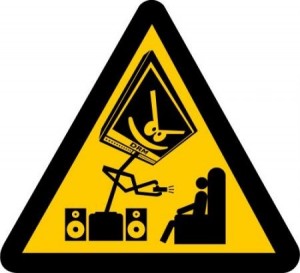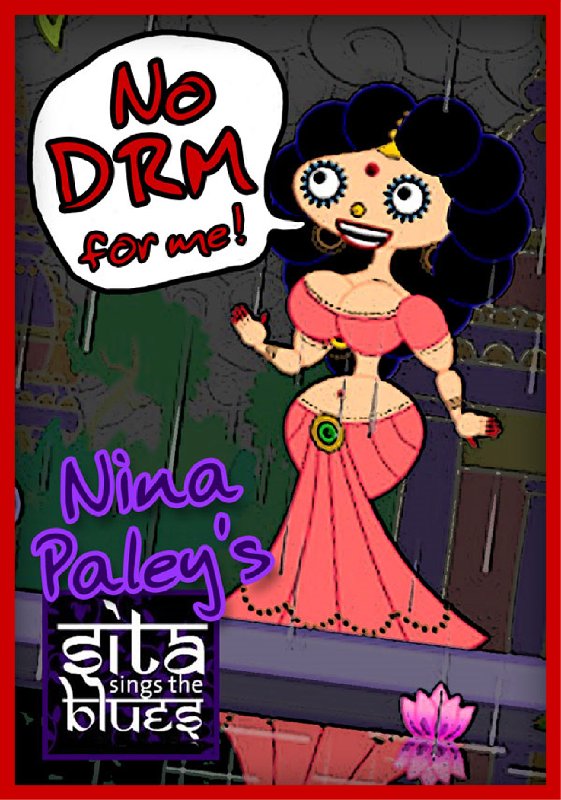Dear Sir Tim Berners-Lee and the World Wide Web Consortium:
Re: Keep DRM out of Web standards — Reject the Encrypted Media Extensions (EME) proposal
As a middle aged mother, I’ve been learning (and sharing what I’ve learned) about net neutrality, the importance of free software, free culture, nd an open Internet, ever since I began hand coding my own HTML web pages and participating on the Internet in 2009. As a creator from a creative family, as well as publishing my own content online, I run a blog for my eighty three year old father. I have come to consider myself a netizen.
One reason DRM is dangerous is that it can hide all manner of spyware and malware from users. Another is that most people don’t even know what it is, or if they do, how to recognize it. While governments have allowed large corporations and media conglomerates to cripple digital products with DRM, there is no requirement anywhere in the world to to inform customers or computer users of such application.
I have avoided DRM wherever possible, but even with the absurd extension of copyright laws, I have been certain that free culture will win out eventually. But that confidence presupposes a free market.
In Canada where I live, our new Copyright Act makes it illegal to circumvent DRM for any reason at all, even if the the circumvention is allowed under our “fair dealing” exemptions, or if the DRM is applied inappropriately. I consider the application of DRM to freely licensed or public domain creative works to be inappropriate.
This is a huge concern for me, both as a cultural consumer and as a self publishing author. Existing copyright law has prevented me from even seeing the finished production of one of my own works.
Independent creators and Internet users are already at a huge disadvantage, because the large media special interests have the wherewithal to successfully lobby governments around the world into maximizing copyright laws and the attendant copyright monopoly to their own great benefit, at our expense.
These large and powerful special interest groups have long had a seat at the W3C table. But where is there representation for Internet users?
Most of the public does not even know W3C exists, let alone how to comment on an issue such as this. Although I am passionately interested in the subject, until I read Harry Halpin’s Guardian article last week, I had no idea there was any way for Internet users or creators to express our dismay beyond signing the Defective By Design’s “Keep DRM out of Web standards — Reject the Encrypted Media Extensions (EME) proposal” Petition. But Mr. Halpin pretty much implies that petition wasn’t enough.
Although Canada has been a world leader in Internet adoption, most Canadians are still not online. For most of those who are, participation on Facebook signifies the height of technical prowess. Certainly most Canadians haven’t even heard of the Guardian, and so will not have even read the article.
Mr. Halpin essentially gave me the weekend to get the word out. This weekend Identi.ca, the social network of choice for a great many people who are aware of these issues, is undergoing a massive migration from a backend of StatusNet to pump.io software. Many users like myself have been consumed in setting up our own federated status net instances. As well, those of us with privacy concerns have been caught up in the NSA Prism news story. For myself, I’ve had two major family happenings this weekend in addition to those online issues.
Maybe a few people who understand the issue will have read the blog post I wrote, but a weekend is not much time. Especially considering that the special interests that want DRM written into the Web Standard have been at the table for so very much longer.
Until the W3C holds a widely publicized meaningful consultation process, that Free Software Petition must be given at least as much weight as the opinions of any other group of stakeholders. Perhaps more, since the inclusion of DRM in the standard panders to the direct benefit of a specific special interest lobby group. Internet Users are easily the largest group of stakeholders, and our exclusion from the process means that the W3C must look out for the public good.
Keeping even a whiff of DRM out of the Web Standard will not harm the corporate special interests who lobby so effectively for it. They can just continue on as they have been, locking their own content behind DRM. Allowing the DRM toehold EME provides will lead to DRM becoming the default.
DRM exists to break interoperability. If DRM is allowed into the W3C Standard, it will become the W3C Standard. If W3C supports this, it will sacrifice the free and open Internet, not just for us, but for generations to come.
Please don’t do this.
Regards,
Laurel L. Russwurm
Category Archives: DRM
2012 International Day Against DRM
That’s today.
DRM
- Digital Rights Management
- Digital Restrictions Management
TPM
- Technological Protection Measures per Bill C-11
- Technological Measures per DMCA
- Technical Protection Measures common parlance
Digital Locks
- All Of The Above
DRM = TPM = Digital Locks
The Day Against DRM article I wrote in 2010 explains my problem with DRM:
DRM stands for digital rights management.
“Digital rights management (DRM) is a generic term for access control technologies that can be used by hardware manufacturers, publishers, copyright holders and individuals to impose limitations on the usage of digital content and devices. The term is used to describe any technology that inhibits uses of digital content not desired or intended by the content provider. The term does not generally refer to other forms of copy protection which can be circumvented without modifying the file or device, such as serial numbers or keyfiles. It can also refer to restrictions associated with specific instances of digital works or devices. Digital rights management is used by companies such as Sony, Apple Inc., Microsoft, AOL and the BBC.
The use of digital rights management is controversial. Proponents argue it is needed by copyright holders to prevent unauthorized duplication of their work, either to maintain artistic integrity[1] or to ensure continued revenue streams.[2] Some opponents, such as the Free Software Foundation, maintain that the use of the word “rights” is misleading and suggest that people instead use the term digital restrictions management. Their position is essentially that copyright holders are restricting the use of material in ways that are beyond the scope of existing copyright laws, and should not be covered by future laws.[3] The Electronic Frontier Foundation, and other opponents, also consider DRM systems to be anti-competitive practices.[4]”
ownership
Clearly, there is a failure to communicate. When we buy something, we believe we own it. The person or company we paid should no longer have any right to the product. They certainly should not have the right to come into our homes and take back the product we have purchased.
But DRM exists to allow the seller to control the product, and how we use the product, even after we have paid for it.
No one actually comes out and tells us in the store that we are buying goods that have been deliberately crippled with DRM.
If they did, customers might not buy them. But there is no ambiguity with retailers– they tell us they are selling us things, and we believe we are buying them.
But apparently the concepts of property ownership that have been prevalent in our society for centuries have suddenly changed. Yet people, customers, consumers have not been told about this. But we need to know about it. We need to understand it. And we need to give our informed consent.
But manufacturers, retailers and governments are not discussing it with us.
Over the past decade or so, instead of explaining to consumers that the rules of buying and selling have changed manufacturers have just been quietly putting DRM on products that we purchase. It is easier for them to cripple the technology than try to explain that they’ve changed the rules. After all, if customers know that the rules have changed, the very natural question is: what do we get out of it? The unfortunate answer to that is “shafted”.
[Note: the Wikipedia quote is as it was in 2010. The text on the Wikipedia DRM page has been expanded in the years since, but this quote is simple and easier to understand, and is as true today as it was then. To see the “new improved” article, click the link]
image credit: “No DRM for Me!” is a remix of part of this image from Nina Paley’s wonderful animated film “Sita Sings the Blues”.
For more links about Day Against DRM blogs posts and activities from all over the world, visit:
http://libreplanet.org/wiki/Group:DefectiveByDesign/Day_Against_DRM_2012#Events
I’ve been building a Pinterest Against DRM/TPMs board as my 2012 Day Against DRM project.




